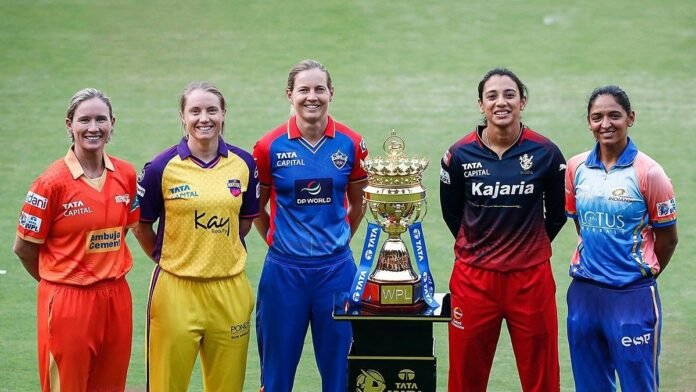When the Indian women’s cricket team lifted the World Cup in Mumbai, they didn’t just win a match—they made history. On November 2, 2025, in front of nearly 40,000 roaring fans at the D.Y. Patil Stadium, India beat South Africa by 52 runs to claim its first-ever ICC Women’s Cricket World Cup title. The moment felt monumental as it was the culmination of decades of effort, heartbreak and unshaken belief.
A Long-Awaited Triumph Turns Reality
India’s path to this win wasn’t easy. Earlier in the tournament, they suffered three consecutive losses, including one to the very team they eventually defeated in the final. But they found their rhythm when it mattered most. In the semi-final, they pulled off a record chase against defending champions Australia. And in the final, their batting and bowling came together in perfect harmony.
Opening batter Shafali Verma stole the show with a fiery 87 off 78 balls, giving India a solid foundation. Then came Deepti Sharma, whose all-round brilliance sealed the deal, she smashed a crucial 58 with the bat and claimed five wickets for just 39. When South Africa’s chase faltered, India held firm. By the final over, they’d turned dreams into reality.
Prime Minister Narendra Modi, along with other national leaders, hailed the victory as “historic” and “spectacular,” praising the team’s resilience and urging young girls across India to chase their own sporting dreams. Even veteran cricketer Diana Edulji, India’s first women’s World Cup captain, called it the proudest moment of her lifelong cricket journey.
A Milestone for Equality and Visibility
This win isn’t just about cricket. For many, it marks a breakthrough in the fight for gender equality in Indian sports. Women’s cricket has historically faced challenges- limited funding, lower visibility, and societal stereotypes. The 2025 World Cup win shatters many of those barriers.
https://images.indianexpress.com/2025/08/India-Womens-ODI-World-Cup-2025-squad.jpg
Young girls across India are already feeling the impact. In cities like Bhubaneswar, local academies report a surge in enrollments, while parents who were once hesitant to support their daughters’ cricketing aspirations are now cheering them on. Coaches believe this could fundamentally change how families view sports for girls, no longer a risky dream, but a legitimate career path.
Experts predict the triumph will accelerate investments in grassroots women’s cricket. Sponsorships, media deals, and professional contracts are likely to grow, fueled by a surge in both national pride and commercial interest.
Economic Power and Opportunity
The economic ripple effects are already forming. Analysts suggest that the win will drive up corporate sponsorship for women’s cricket, especially for the Women’s Premier League (WPL), and encourage government spending on cricket academies and infrastructure. There’s also talk of greater media visibility and better pay parity for women players, long overdue in a sport that awards the men’s game so much more attention and resources.
This victory could help shift sports diplomacy, too. Just as India’s men’s 1983 World Cup triumph changed the nation’s cricketing image globally, the women’s win could highlight India’s growing commitment to gender inclusivity on the world stage.
A Cultural Turning Point
The emotional resonance of this win goes beyond economics and trophies. It signals real change. For many who came before players like Mithali Raj, who witnessed heartbreaks in past finals, the victory is personal. It’s a validation of sacrifices made over decades, of repeated disappointments, and of unwavering faith. As Edulji put it, this feels like a long-overdue tribute to every woman who played with little fanfare but with a fierce heart.
In a country where cricket is deeply woven into its social fabric, this win may also reconfigure how young girls imagine their futures. Suddenly, professional cricket isn’t just a dream, it’s a realistic ambition.
What’s Next: Building the Legacy
Winning a World Cup is just the beginning. For this moment to spark systemic change, there’s work ahead. Sustaining this momentum means investing in junior cricket programs, building academies across states, and ensuring access to quality coaching and facilities. It also means maintaining media coverage, building sponsorship relationships, and supporting players beyond just the elite.
Many in the cricketing world are optimistic. This could be the beginning of a golden era for women’s cricket in India, one that empowers not just the national team, but builds a pipeline of talent from small towns to big stadiums.
Symbol of Hope and Inspiration
The 2025 Women’s World Cup victory will be remembered not just as a sporting triumph, but as a cultural milestone. It’s a story of determination, team spirit, and trailblazing ambition. It’s about young girls watching their heroes lift that trophy and believing, truly believing, that one day it could be them.
In Indian cricketing history, this moment may well be the defining chapter for a generation of women whose courage, skill, and passion will forever reshape the game. And perhaps, beyond the boundaries of cricket, it will reshape how our society sees women, capable, powerful, and absolutely world-class.



